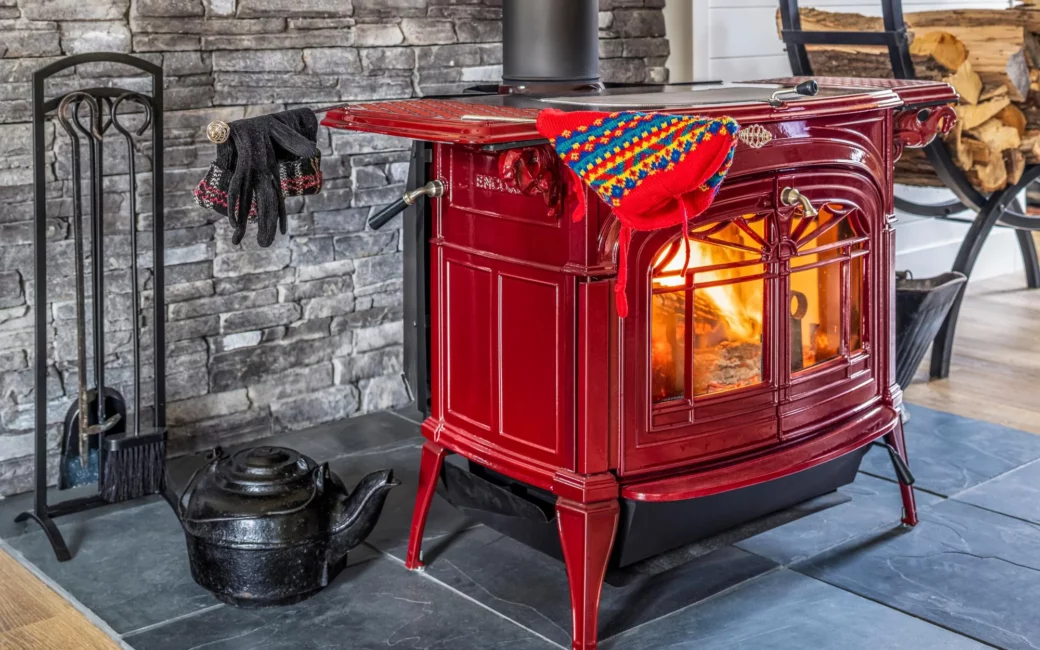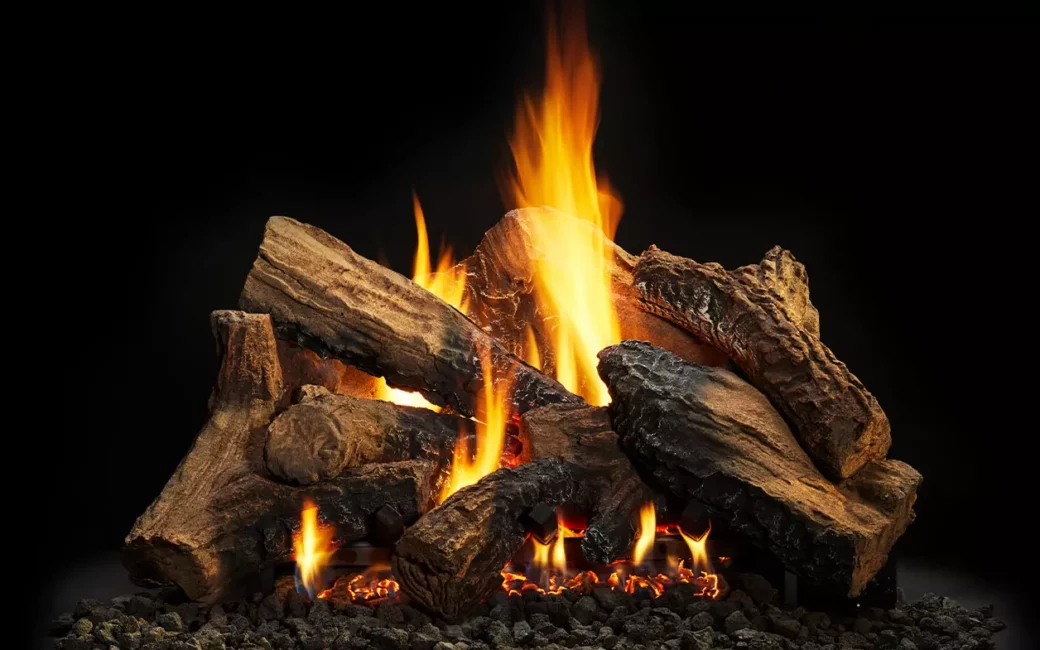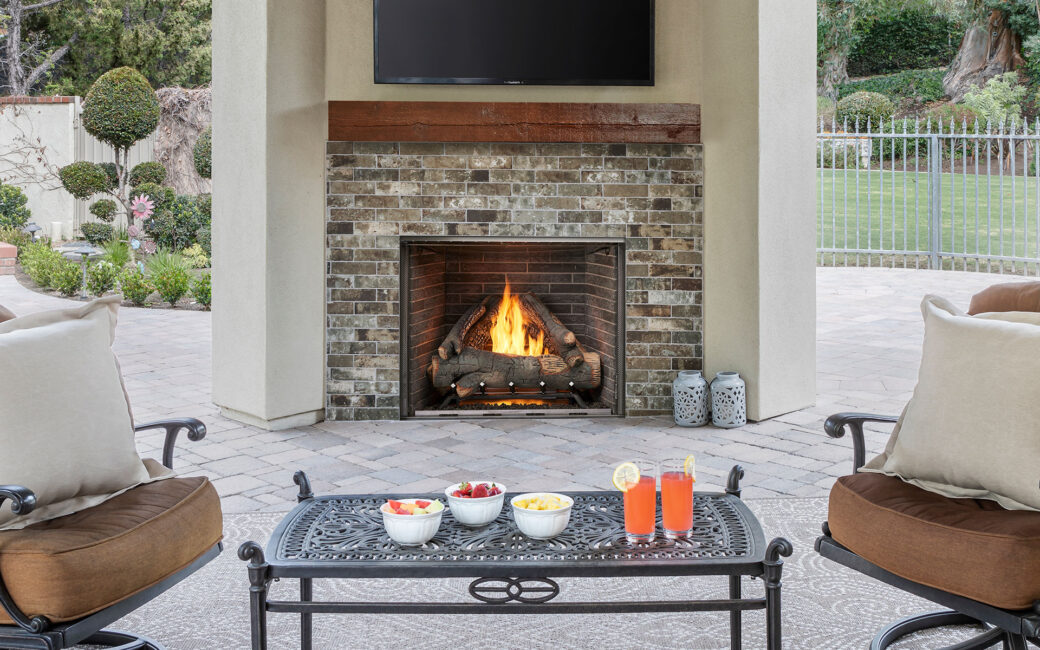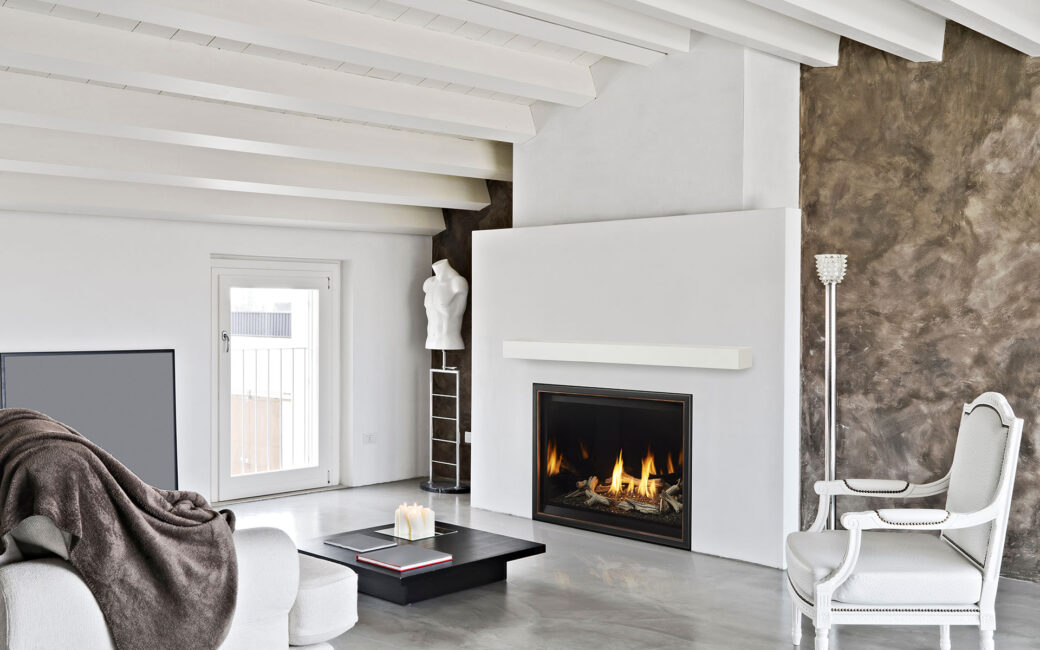Gas Fireplace Inserts Increase Heating Efficiency with Style
Let’s face it. Traditional, open-masonry fireplaces just aren’t very efficient. Every minute they burn, these fireplaces can exhaust as much as 300 cubic feet of heated indoor air outside your home, according to the U.S. Department of Energy. That’s 18,000 cubic feet of heated air lost each hour.
What happens as the warm air is leaving? Cold air from windows, doors and other parts of your home are drawn to the fireplace. The room may stay warm, but the rest of your house is actually getting cooler. Your furnace takes notice and works even harder to heat your entire home resulting in high heating costs.
So you might be asking yourself, how can I enjoy our existing fireplaces without suffering from high energy bills and drafty homes? It’s easy… a gas fireplace insert! Inserts fit directly into the opening of existing masonry-built fireplaces and offer enhanced heating performance, style and money-saving efficiency.
By placing a gas fireplace insert into an existing masonry fireplace, you’ll not only update the look of your home, but you’ll also be enjoying a more efficient, clean-burning fire with the flip of a switch. And, it’s faster and less expensive than most people think; just $2,900 covers the average cost of a gas fireplace insert and installation, and the whole process can usually be completed in just a couple hours.
Fireplace inserts come in numerous designs allowing homeowners to find an insert that fits their needs for style and performance. Two popular, best-rated fireplace inserts are the Heat & Glo Cosmo Insert and the Escape insert.
Marvelous & Modern Gas Fireplace Insert: The Heat & Glo Cosmo Insert. This unique gas insert features a delightfully contemporary design, perfect for stylish spaces of all shapes and sizes. A striking reflective, black glass interior and long ribbon flame makes it a standout supplement to any home.
Why we think you’ll love this gas fireplace insert:
- It’s customizable! Select from 5 colored glasses or ceramic stones for a truly unique internal firebox that will perfectly suit your style.
- It works for both large and small openings! This modern gas fireplace insert comes in two sizes to allow for the perfect, snug fit into your existing masonry fireplace opening. The Cosmo-I35 is ideal for larger fireplace openings (23-3/4″ high) and the Cosmo-I30 ideal for smaller fireplace openings (19-1/8″ high).
Refined, Traditional Gas Fireplace Insert: the Heat & Glo Escape. The well-appointed Escape FireBrick insert offers high-efficiency heating and impressive flames. Deluxe features like an illuminated ember bed, accent lighting and full-function remote make this traditional style fireplace insert, best-in-class.
Why we think you’ll love this gas fireplace insert:
- It’s designed to heat better, faster! The Exclusive FireBrick® material provides authentic masonry appearance inside the firebox and allows for fast, powerful heat output.
- It works for both large and small openings! This traditional gas fireplace insert comes in two sizes to allow for the perfect, snug fit into your existing masonry fireplace opening. The Escape-I30B is ideal for a smaller opening and the Escape-I35 is great for a larger opening.





